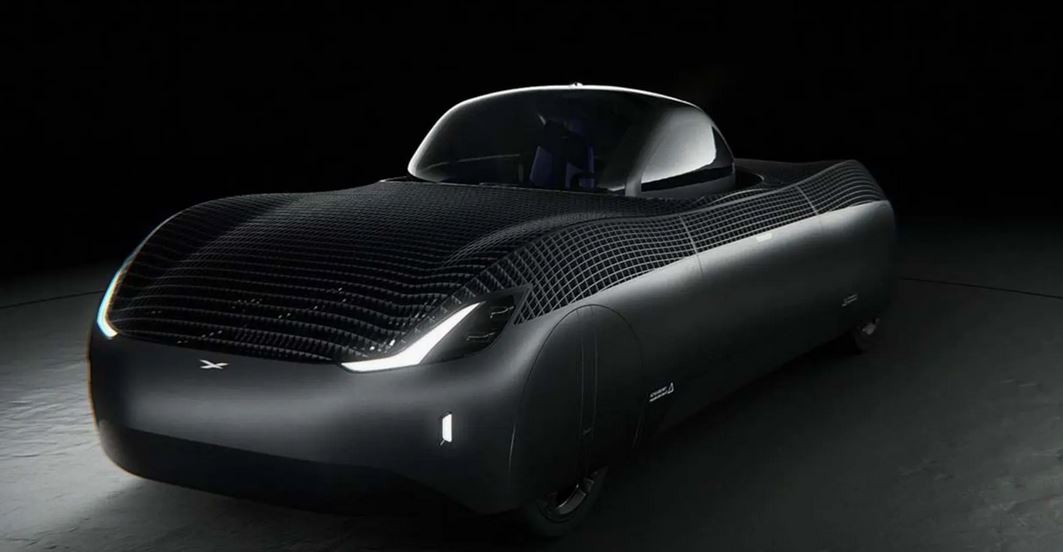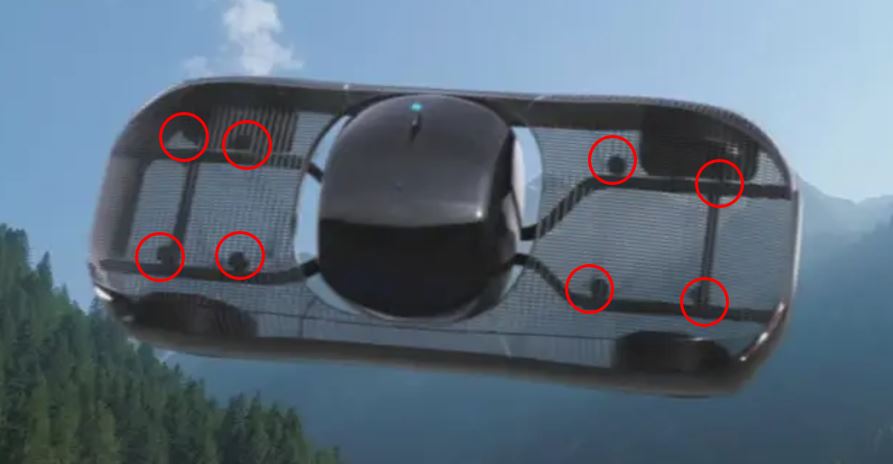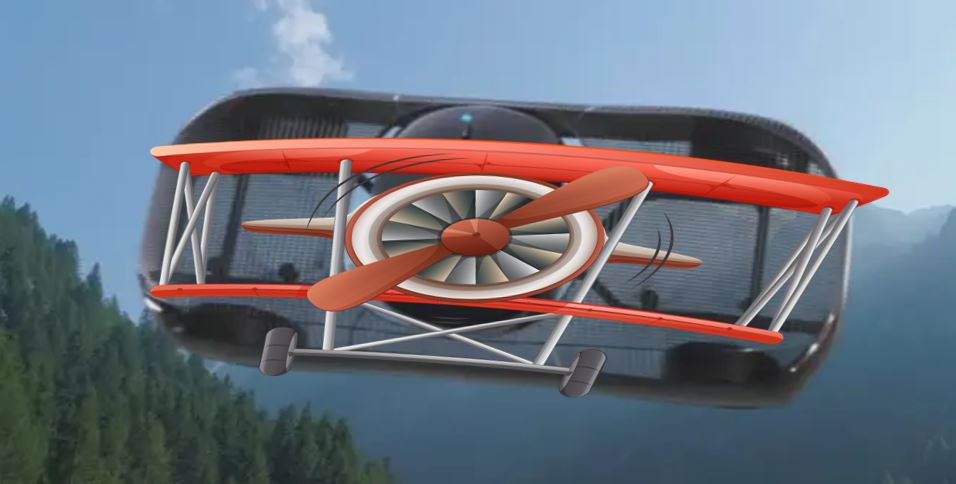
Making a good electric car is challenging. It’s also difficult to make a good aircraft. Making a flying car isn’t likely to be very good at either function, but it’s fun to see them try.
Fox Business: Alef gets FAA Authorization
Here’s what it looks like in car mode. It uses hub motors for locomotion, meaning that there is a motor behind each wheel. That’s easy. It isn’t clear how it will steer, what kind of suspension it will have or what provisions will be made to keep people alive in an accident. I imagine on a highway, it will be like riding a scooter. You can do it, but you won’t enjoy it or survive a crash.

Here is what it looks like in flight mode. It has eight propellers, circled in red, to move it in the air. With this photo, it’s obvious that there isn’t much provision for a battery or any of the other parts needed for a car.

Those eight motors can lift the vehicle vertically, and short hops can be made with the vehicle acting like a quad-copter, but in order to fly any distance, the vehicle needs a wing to provide lift. It actually has two wings. Those members that act as the vehicle’s frame, are actually wings, making this a biplane. I’m guessing that the batteries are built into the structural wing members. It’s pretty clever.

Passengers might find the experience a little bit uncomfortable as the cabin rotates in two directions. The cabin rotates about an axis parallel to the vehicle. That’s called roll. The cabin also rotates about an axis that is perpendicular to the eight lift motors. When flying in biplane mode, the passenger would be oriented like this.

As I said, this vehicle won’t be a good car or a good plane. It isn’t clear what problem it solves. Quad-copter style drone taxis do seem like they solve a problem. In a congested city, getting from the top of one building to the top of another could save quite a bit of time. They look dangerous, but driving in Dubai is also dangerous. There are many companies working on drone taxis, and one like this seems like it could be viable.